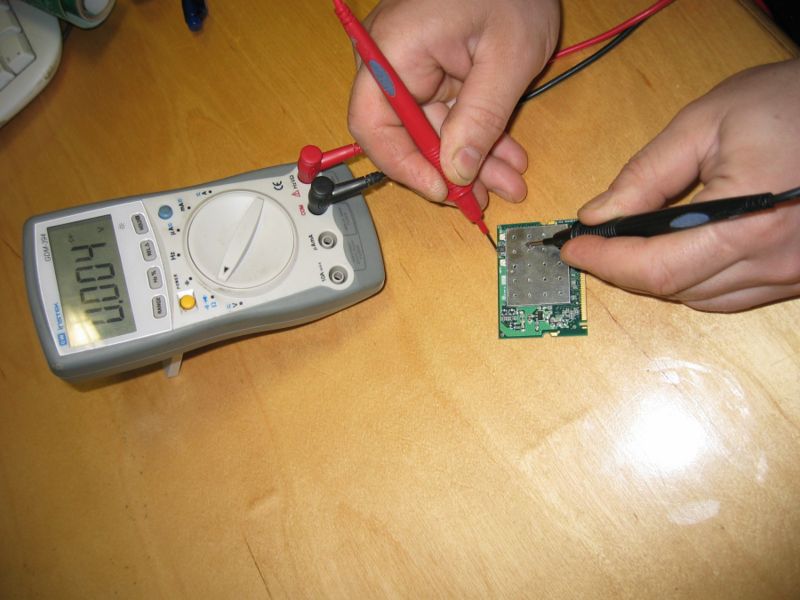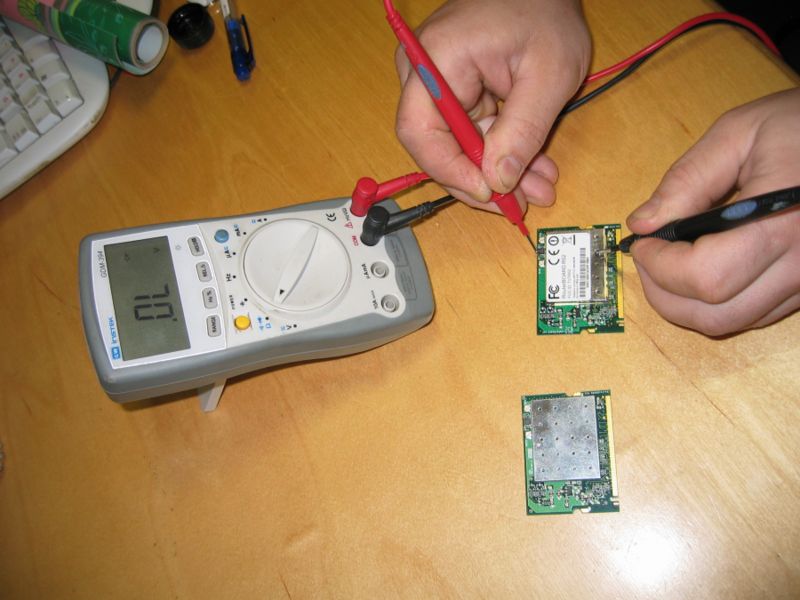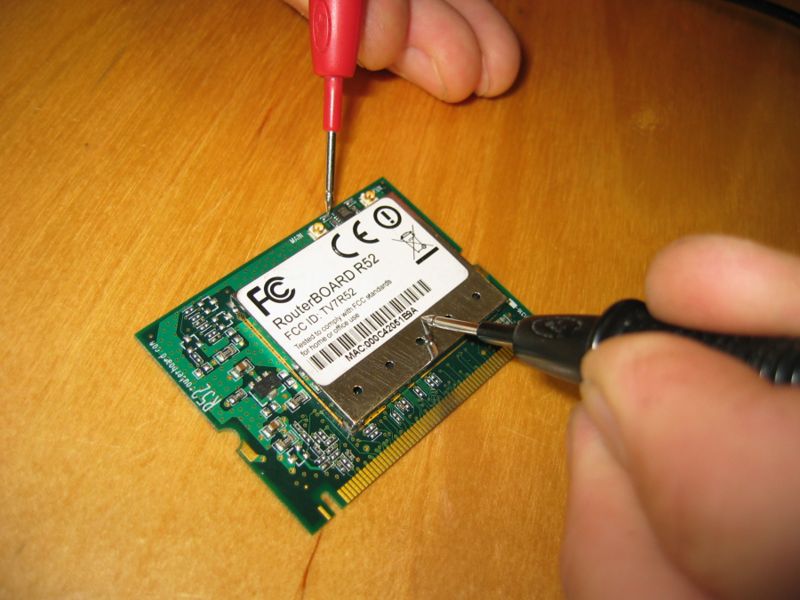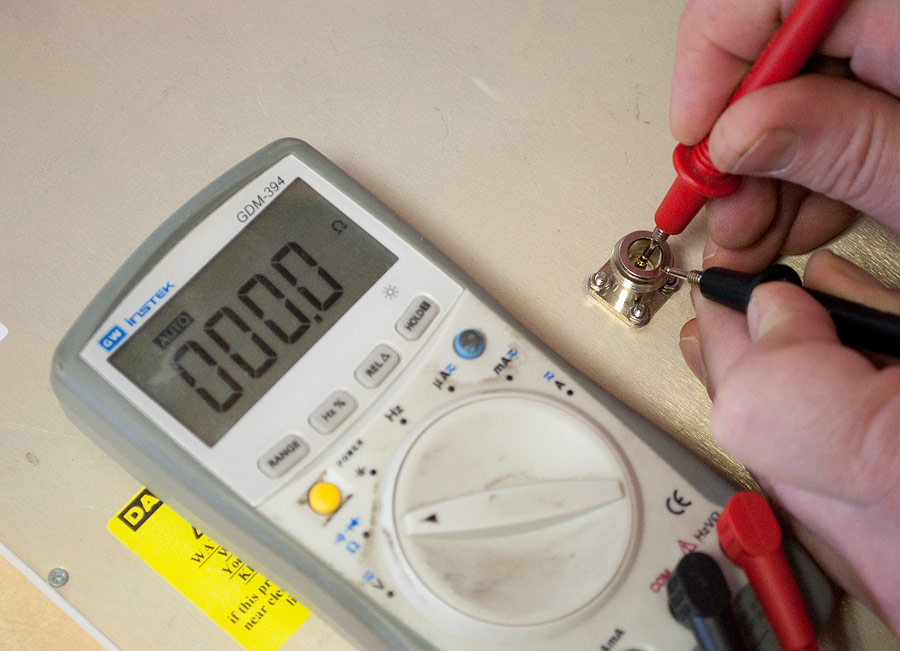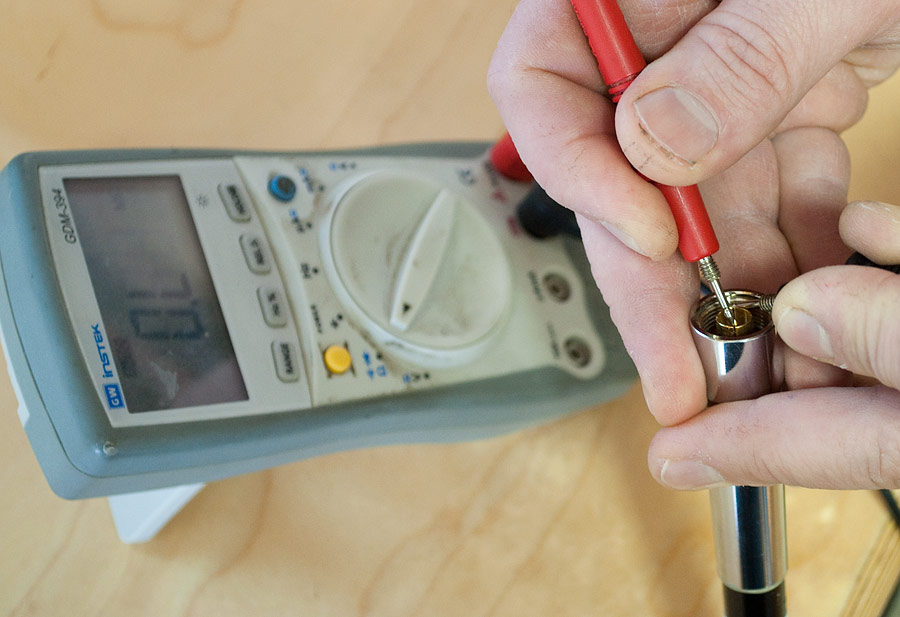Manual:Wireless card diagnostics: Difference between revisions
Jump to navigation
Jump to search
m moved R52 diagnose to Wireless card diagnostics |
No edit summary |
||
| Line 1: | Line 1: | ||
== ESD damage == | |||
To test if your R52 or R52H card is malfunctioning due to lightning/storm electrostatic damage, use a multimeter: | To test if your R52 or R52H card is malfunctioning due to lightning/storm electrostatic damage, use a multimeter: | ||
Damaged card: | |||
[[File:Storm1.jpg|800px]] | |||
Normal card: | |||
[[File:Storm2.jpg|800px]] | |||
Testing area close-up: | |||
[[Image:Storm3.jpg|800px]] | |||
== DC grounded antennas == | |||
Also make sure that your antenna is DC grounded: | |||
DC grounded antenna. This antenna doesn't need a Coax lightning arrestor: | |||
[[ | [[File:Dc grounded.jpg|DC grounded antenna]] | ||
NOT DC grounded antenna. This antenna needs a Coax lightning arrestor to avoid sudden wireless card damage. Note the OL (Overload) in the multimeter: | |||
[[ | [[File:Dc notgrounded.jpg|DC NOT grounded antenna]] | ||
[[Category:Manual]] | [[Category:Manual]] | ||
Revision as of 13:08, 17 December 2009
ESD damage
To test if your R52 or R52H card is malfunctioning due to lightning/storm electrostatic damage, use a multimeter:
Damaged card:
Normal card:
Testing area close-up:
DC grounded antennas
Also make sure that your antenna is DC grounded:
DC grounded antenna. This antenna doesn't need a Coax lightning arrestor:
NOT DC grounded antenna. This antenna needs a Coax lightning arrestor to avoid sudden wireless card damage. Note the OL (Overload) in the multimeter:
